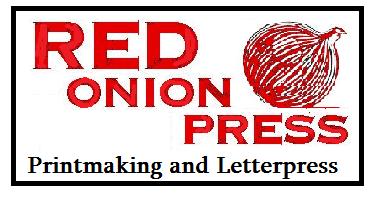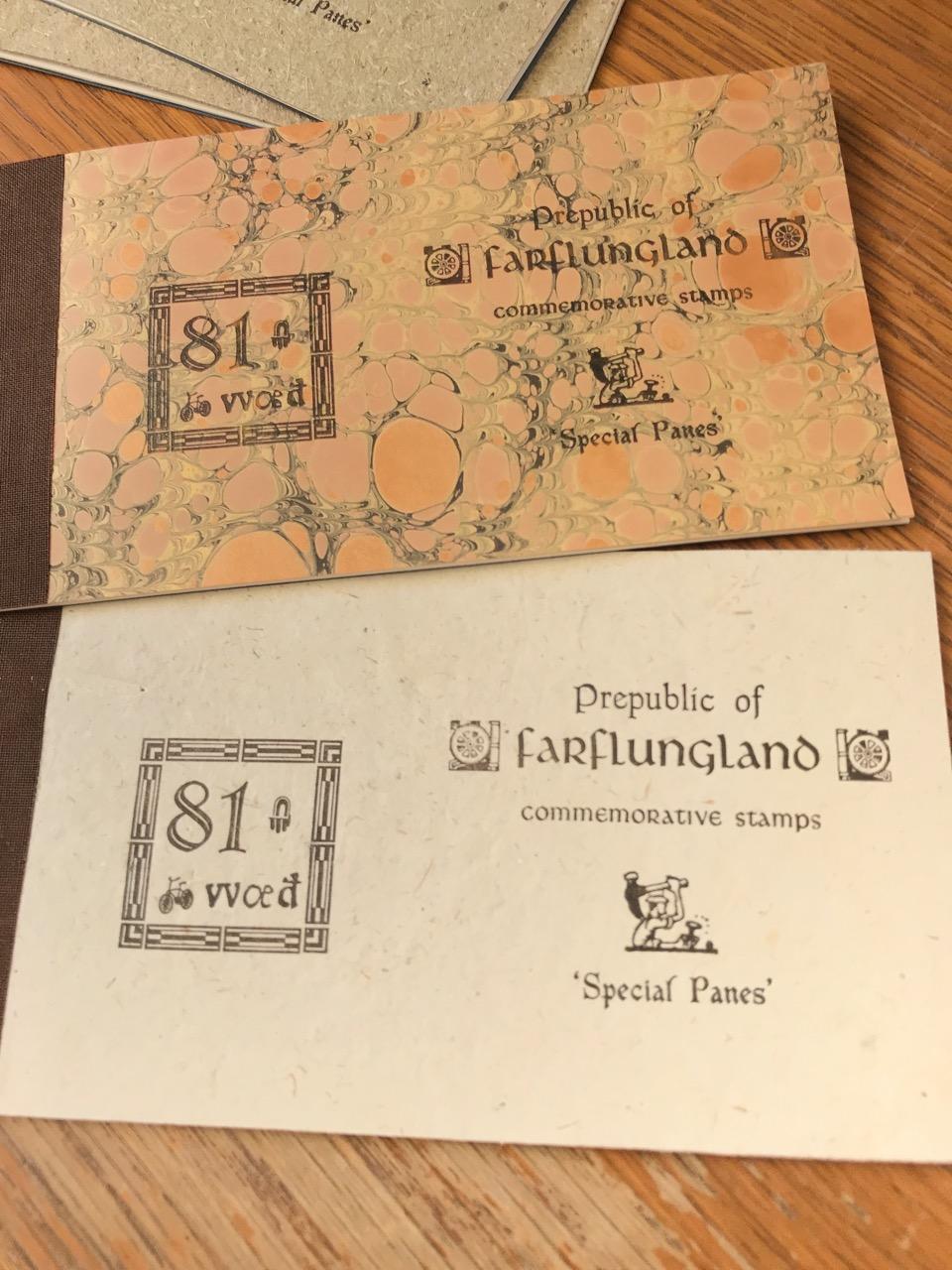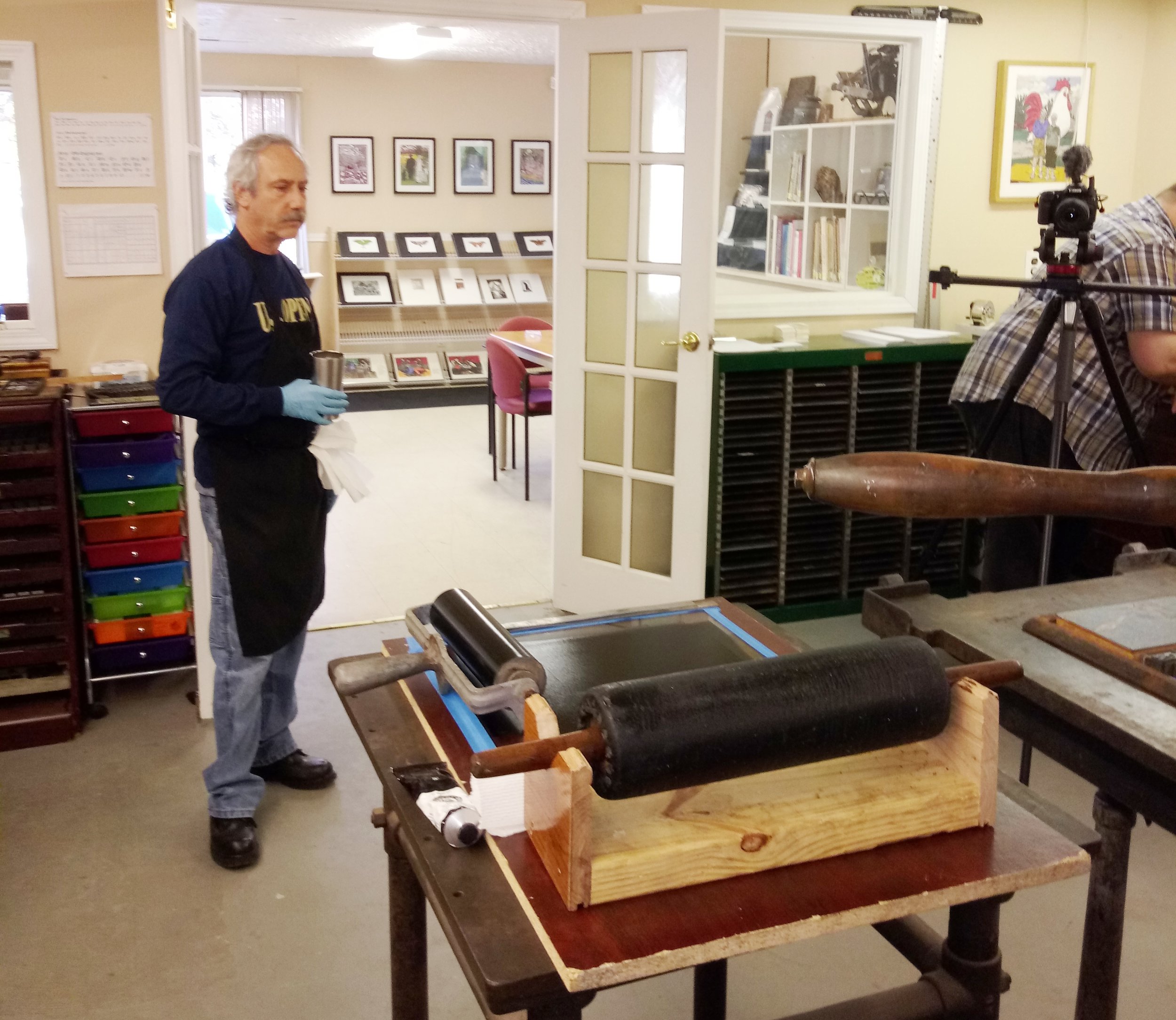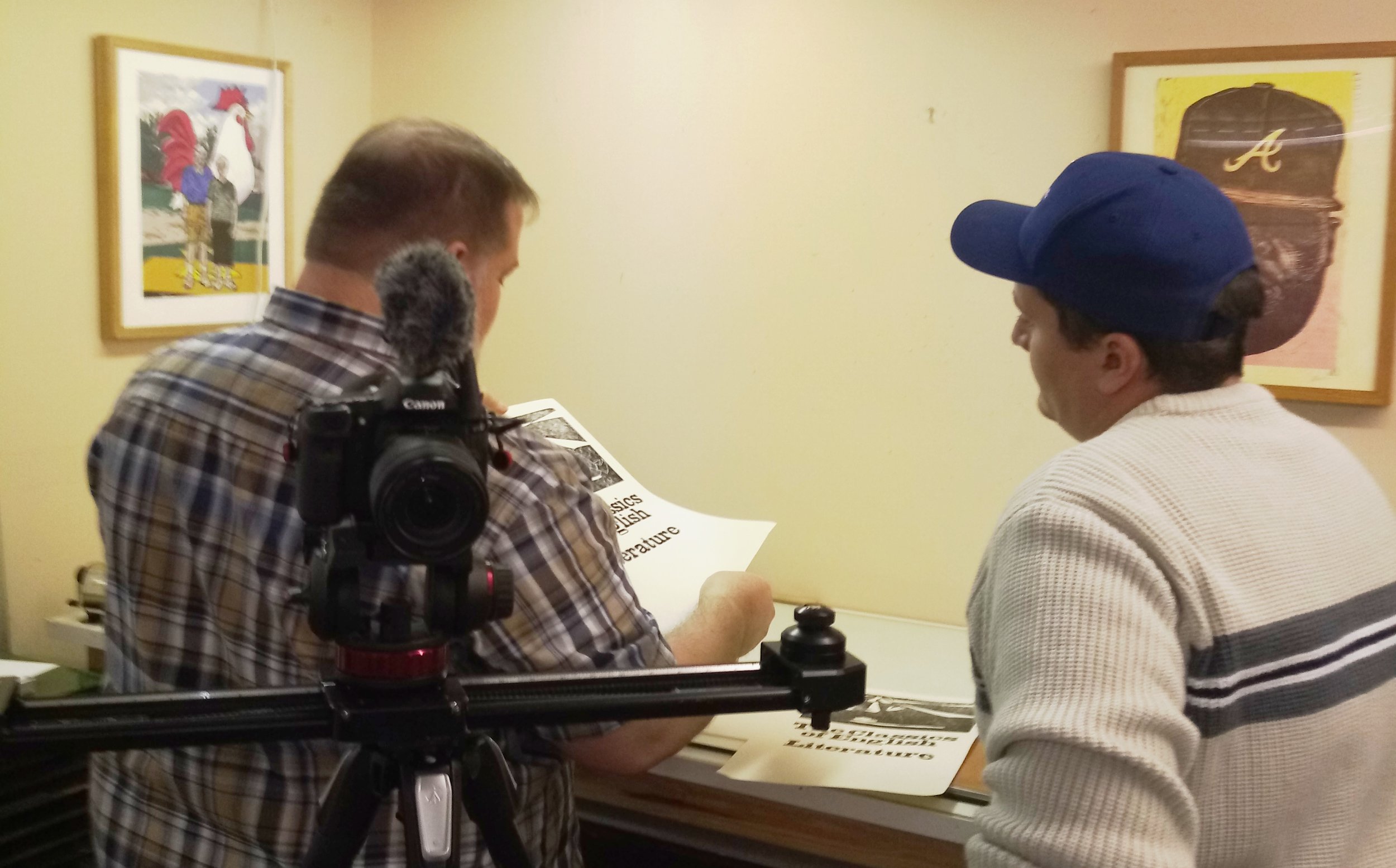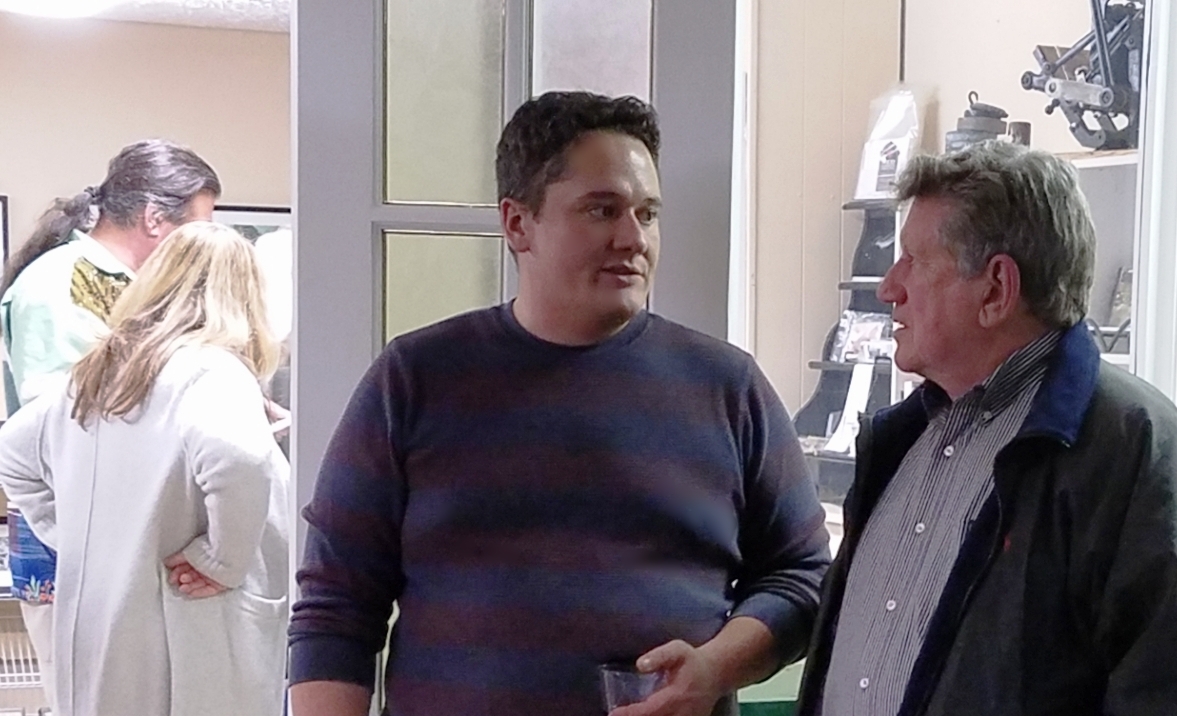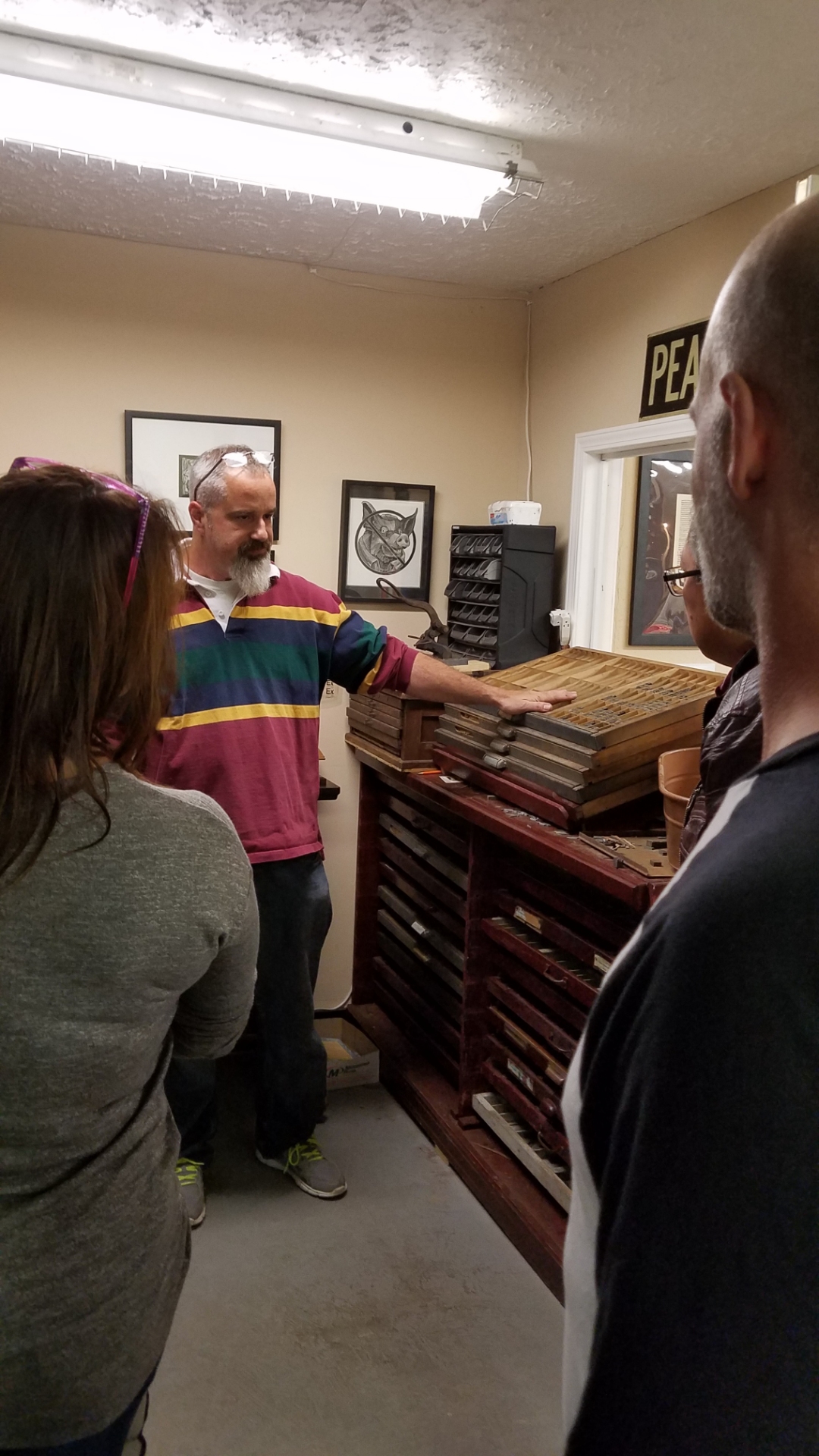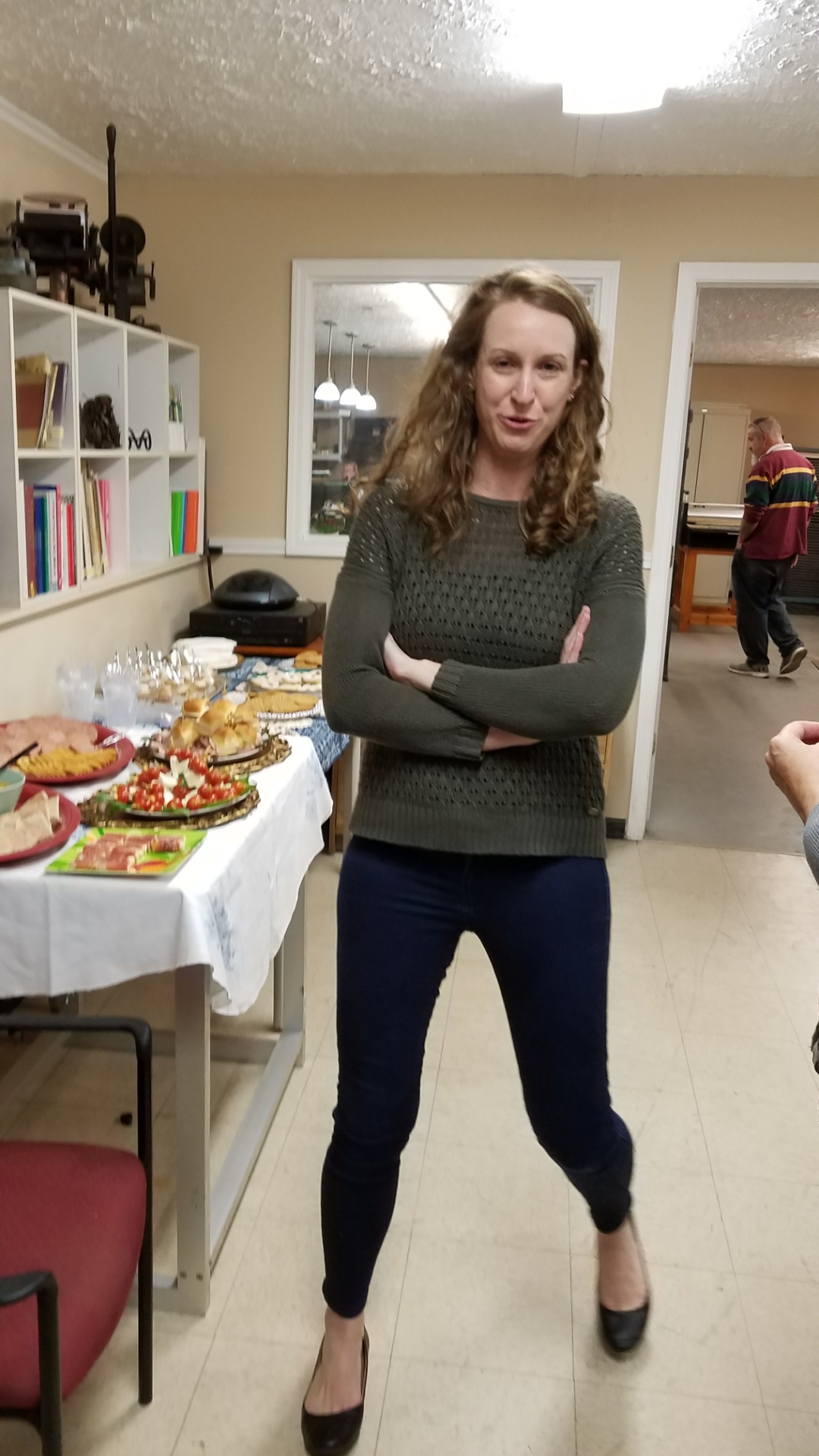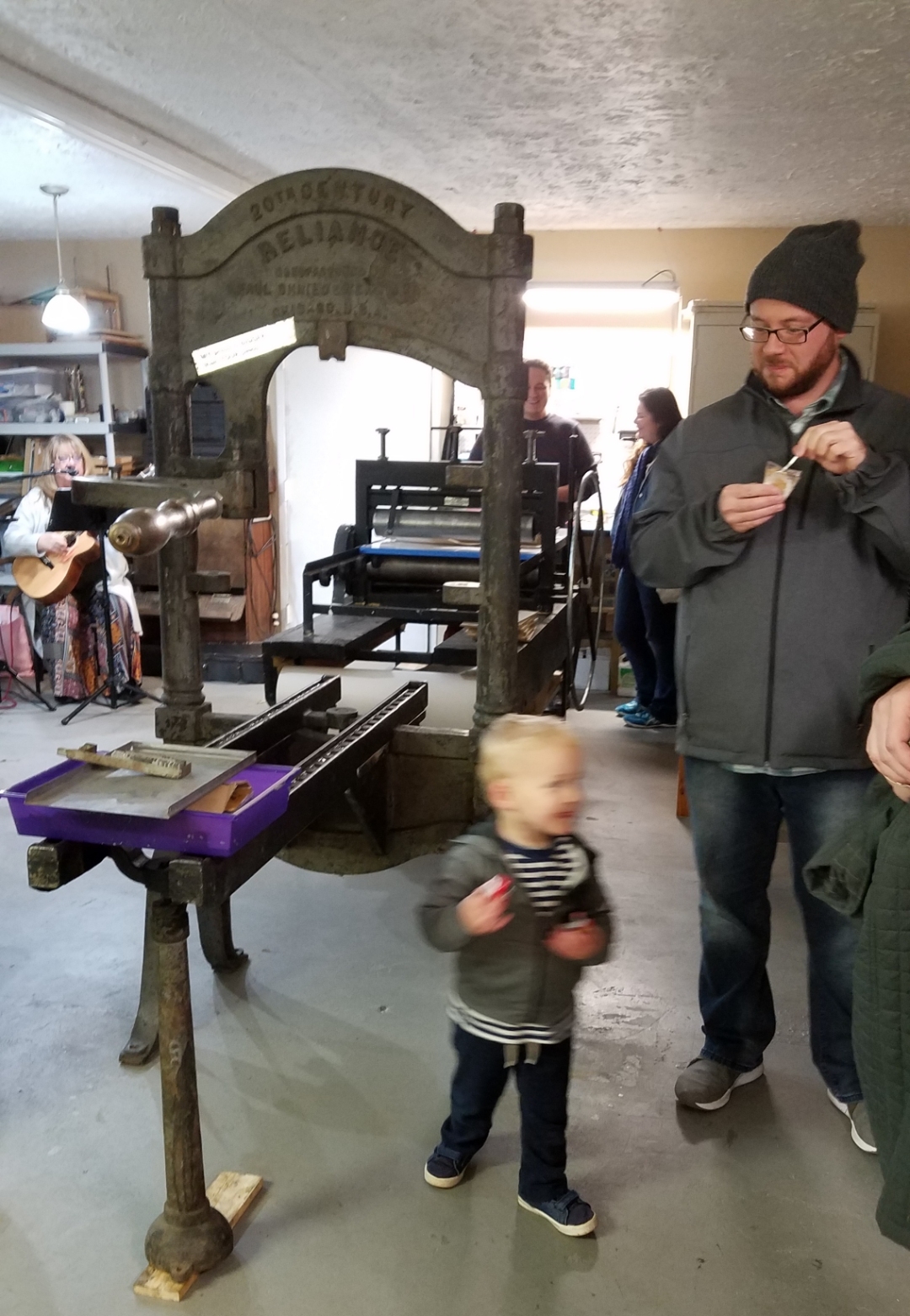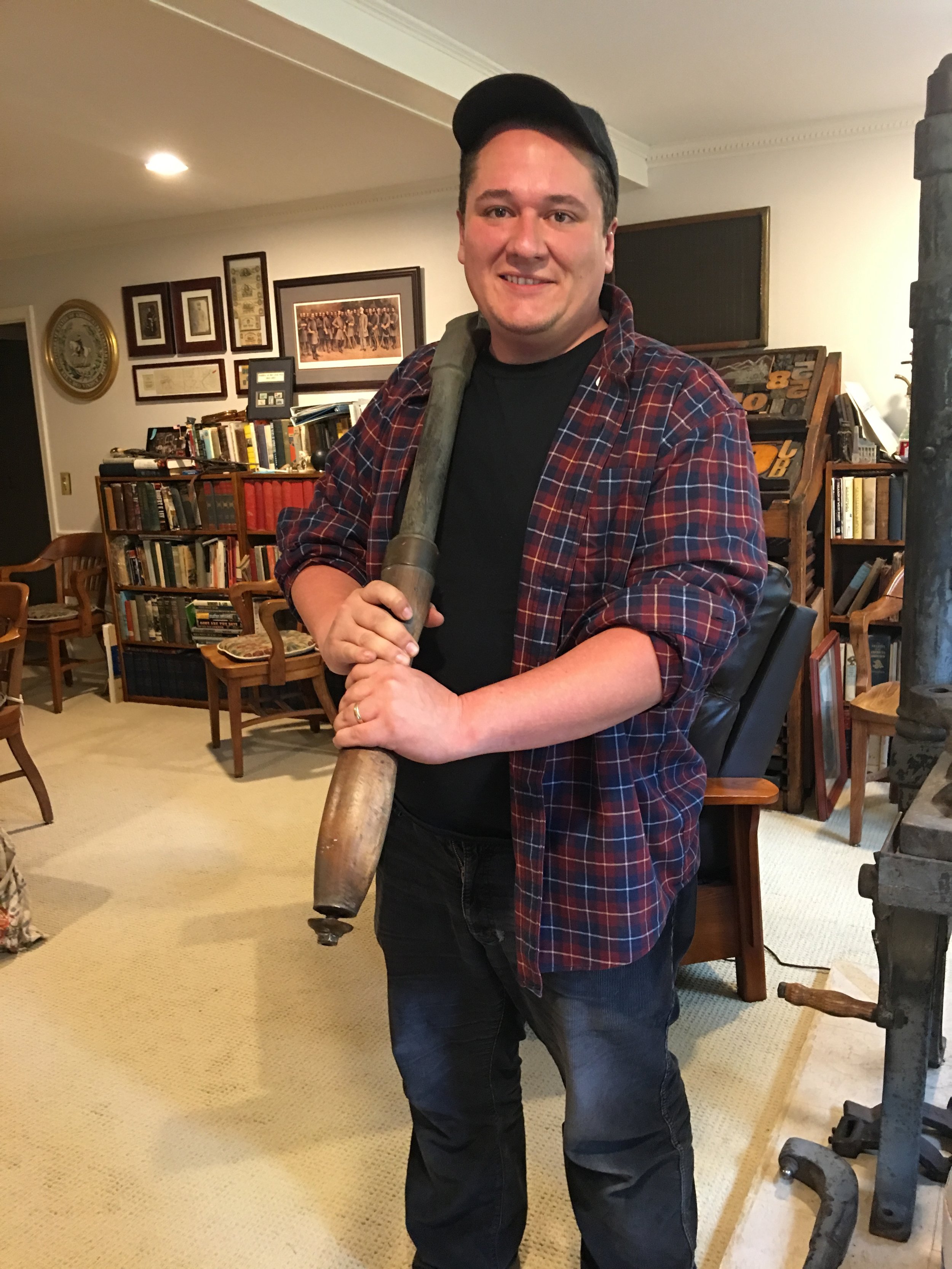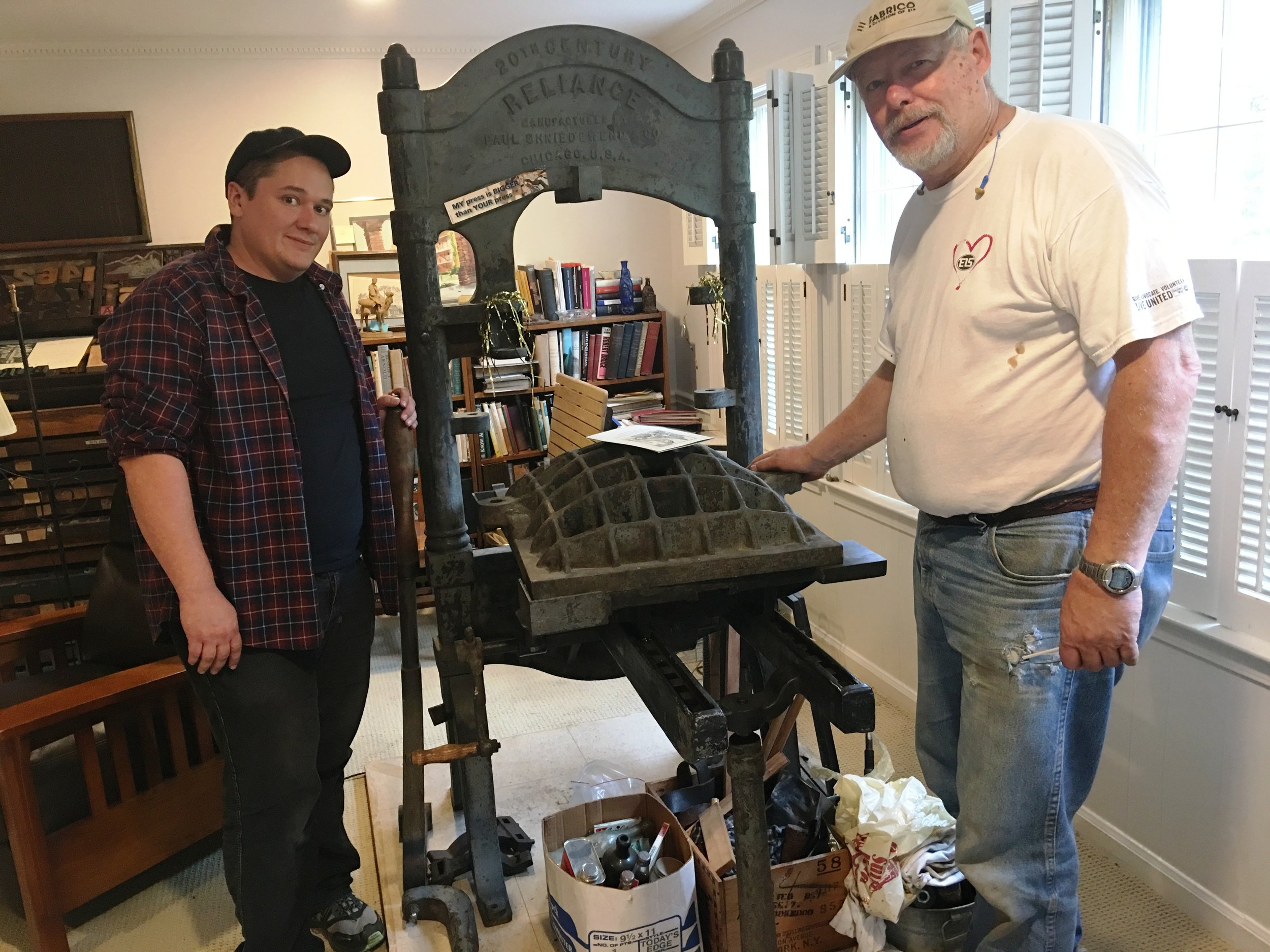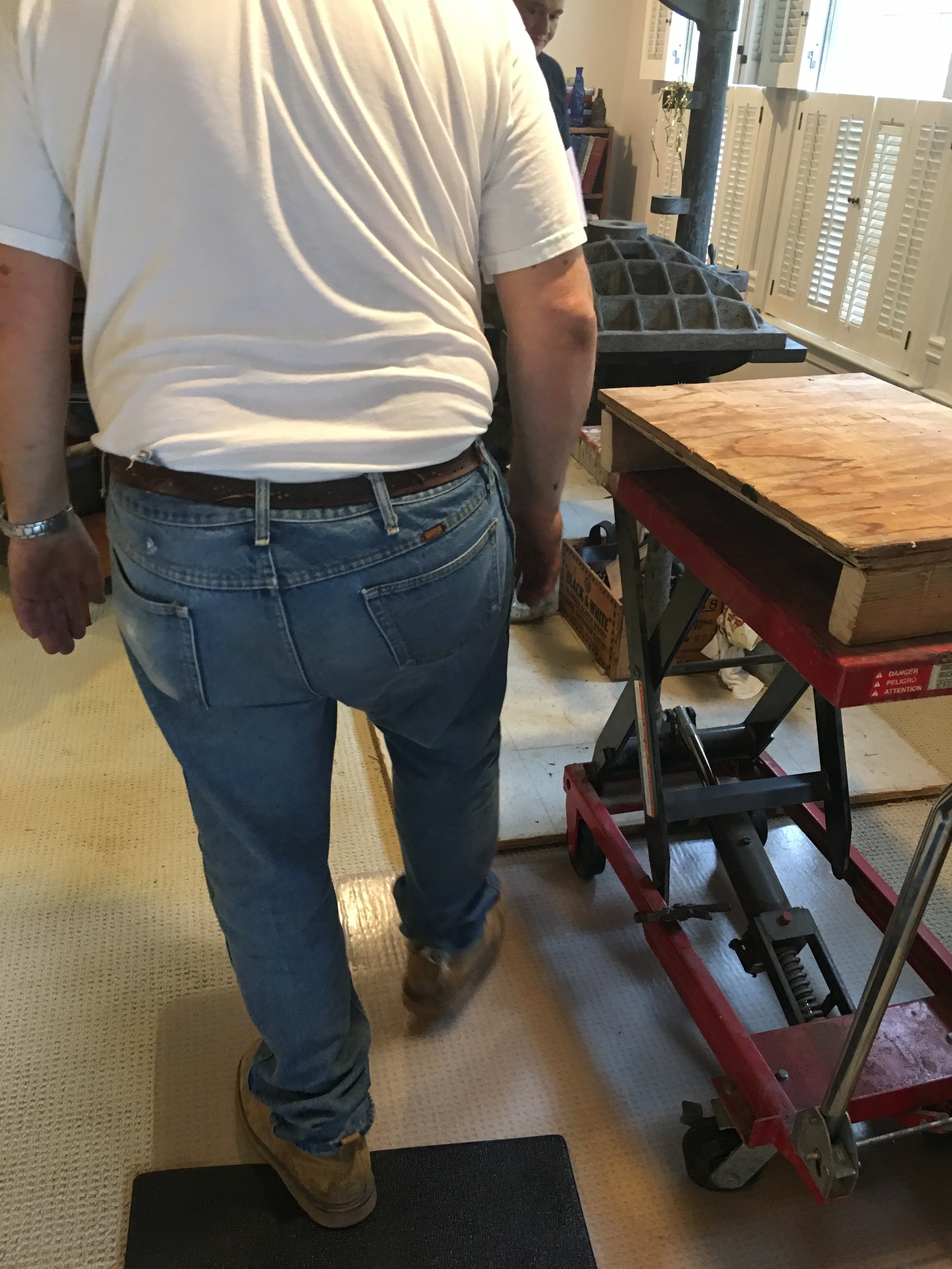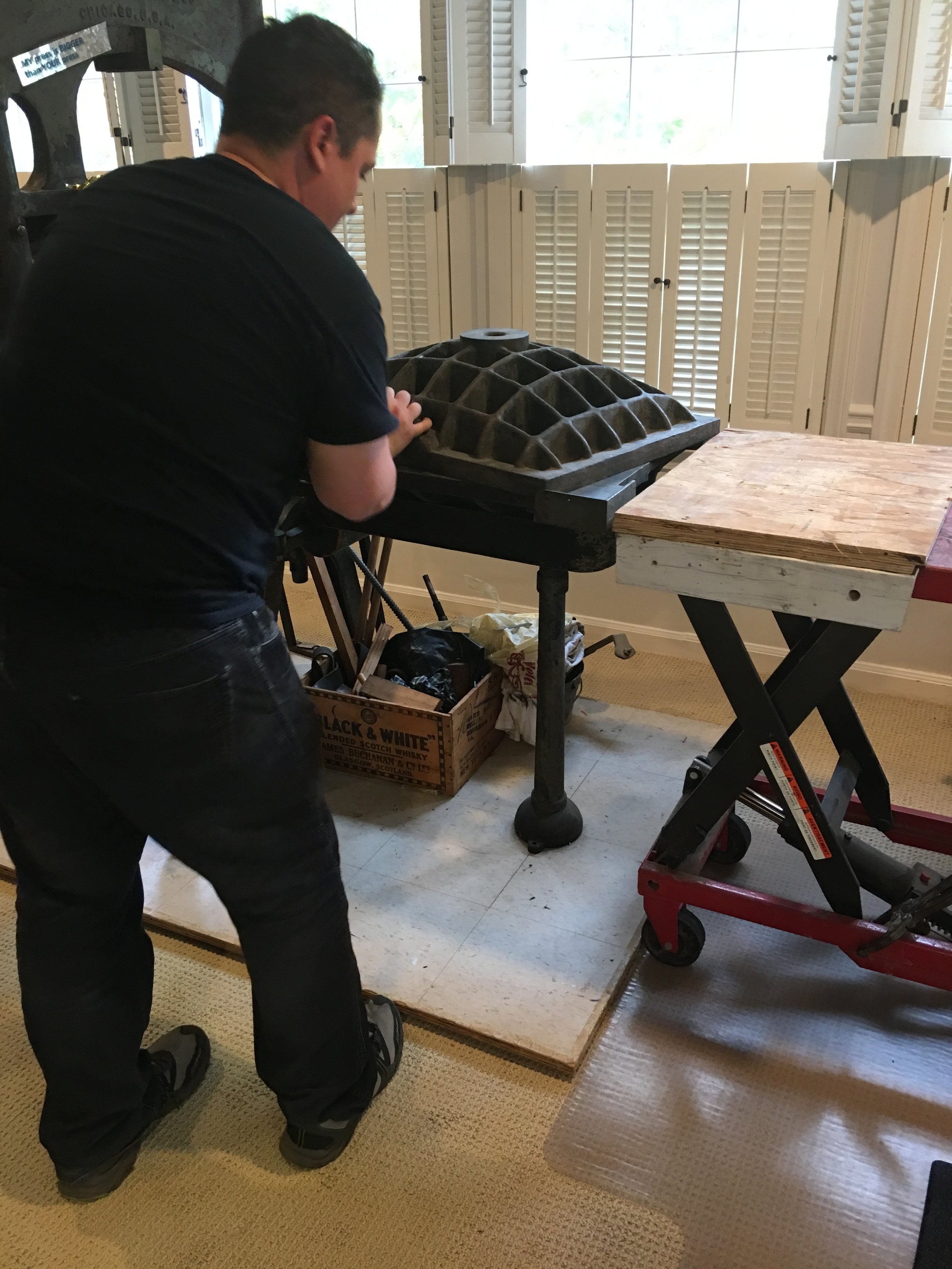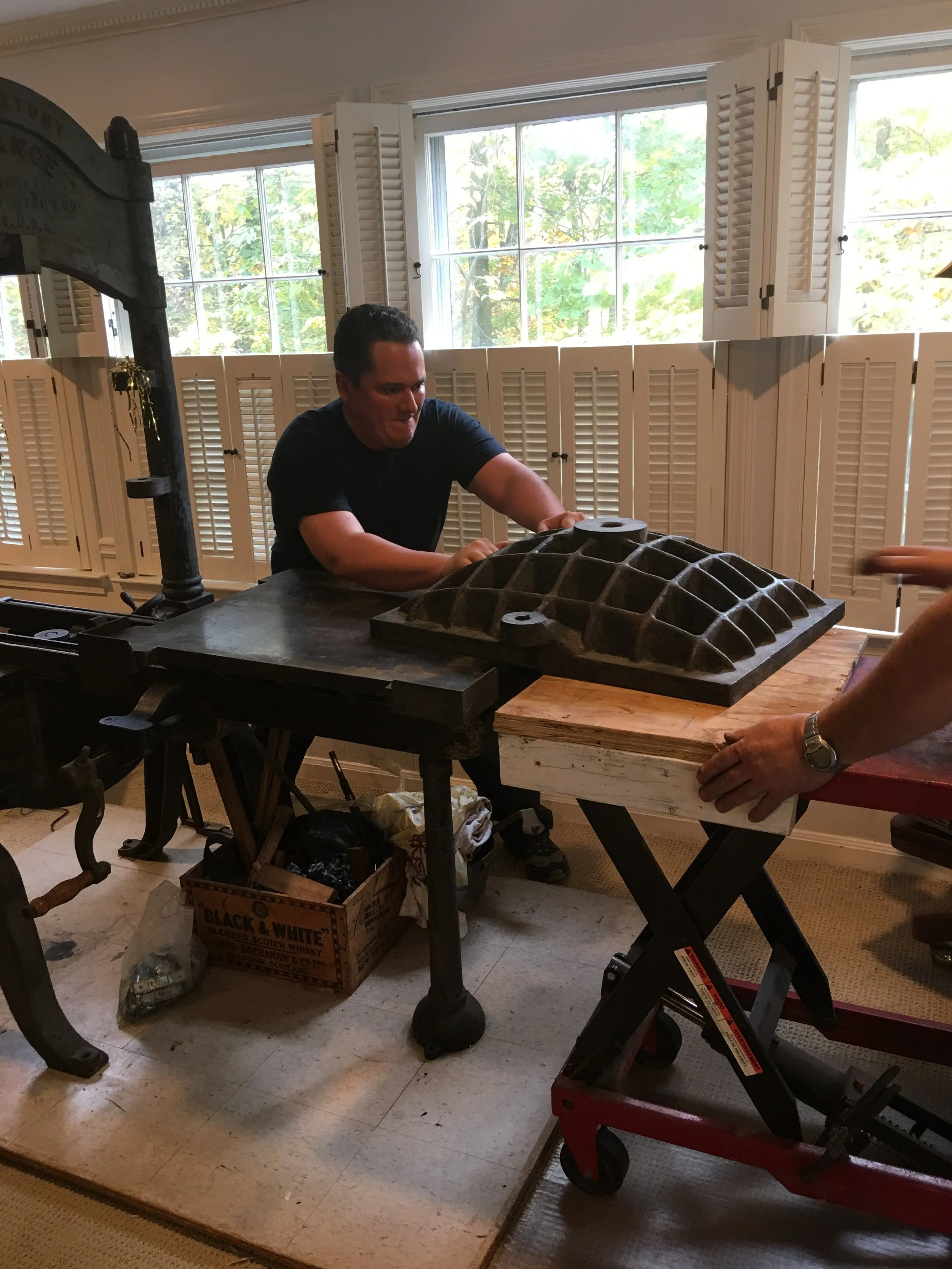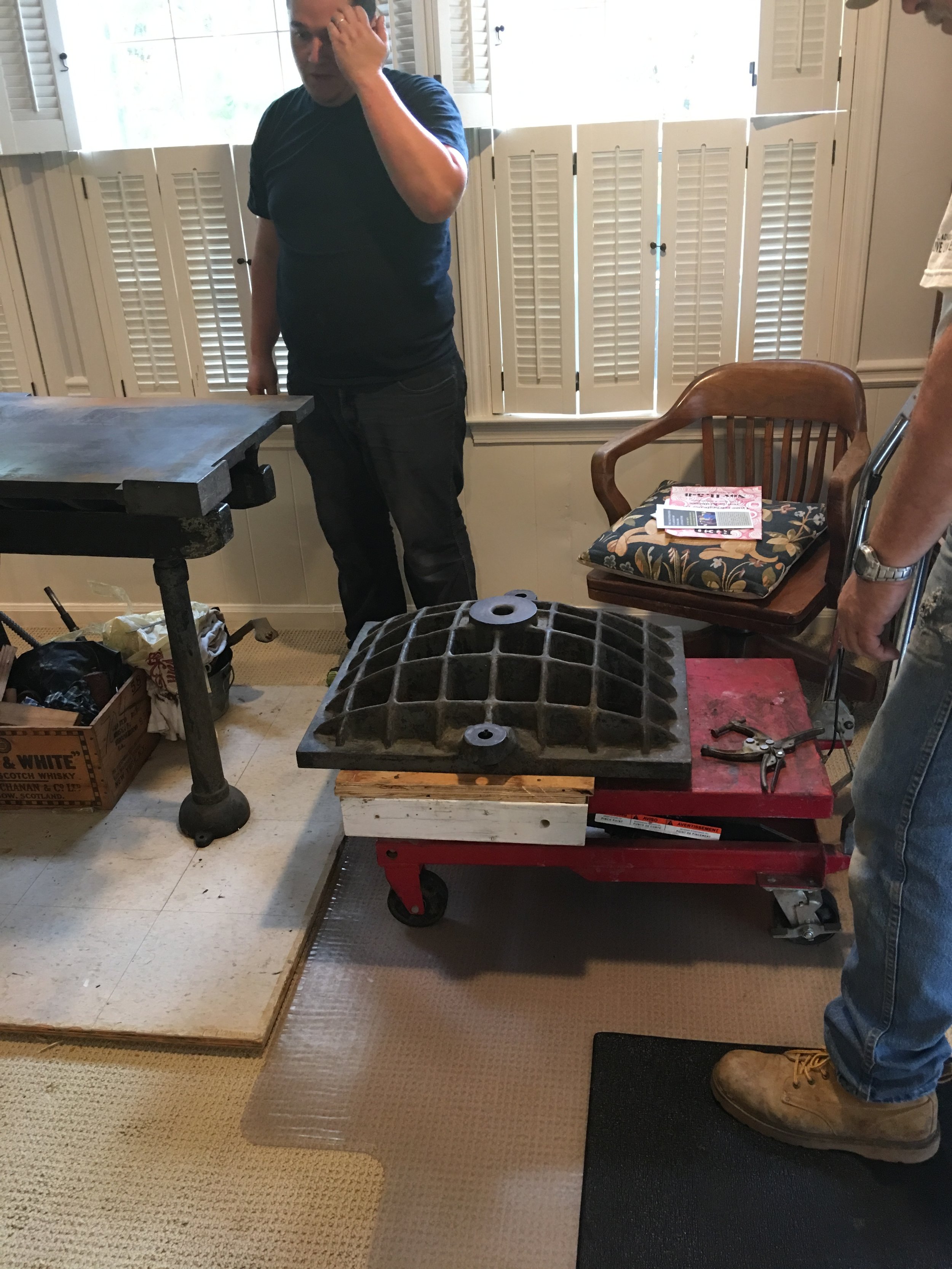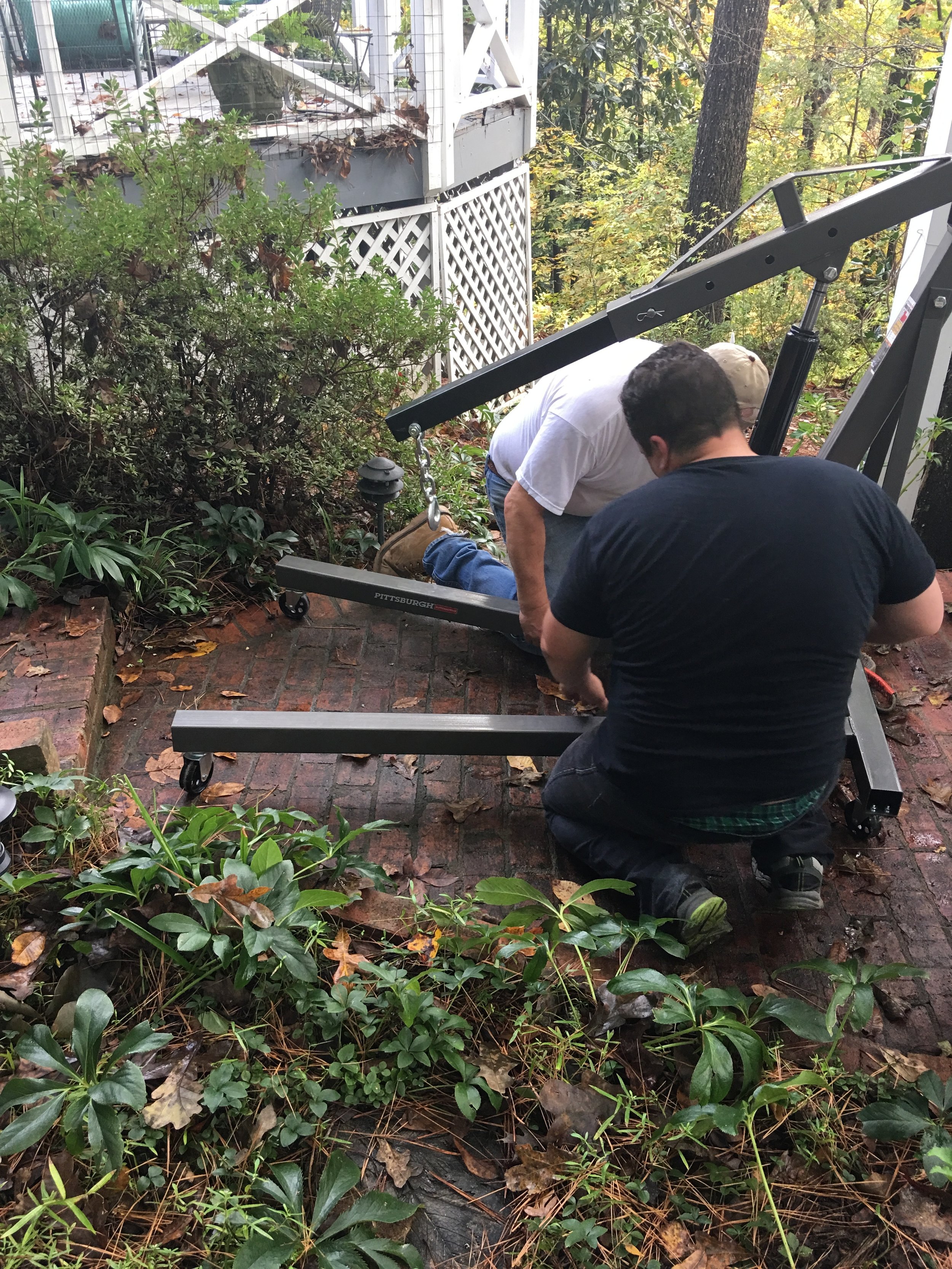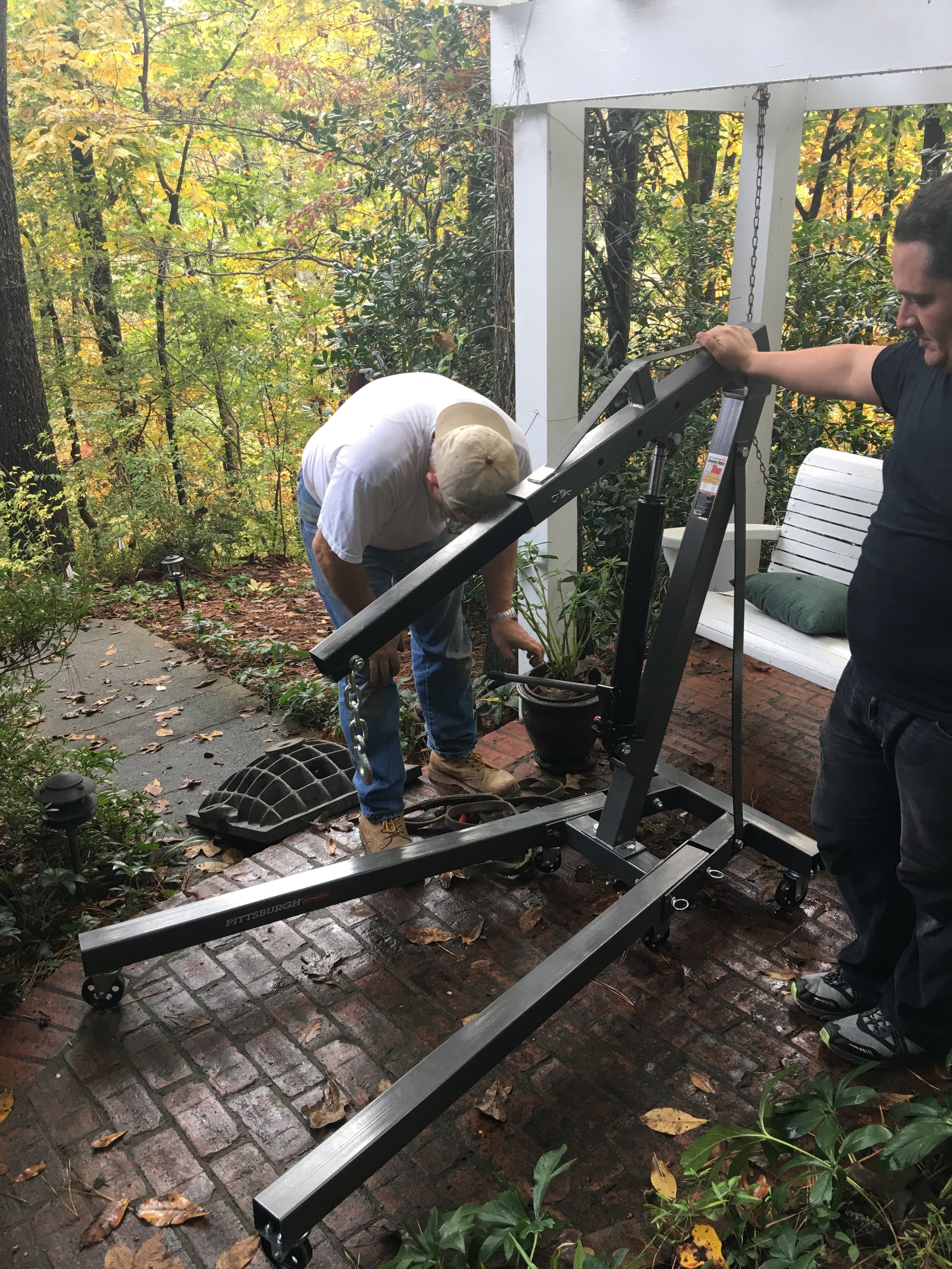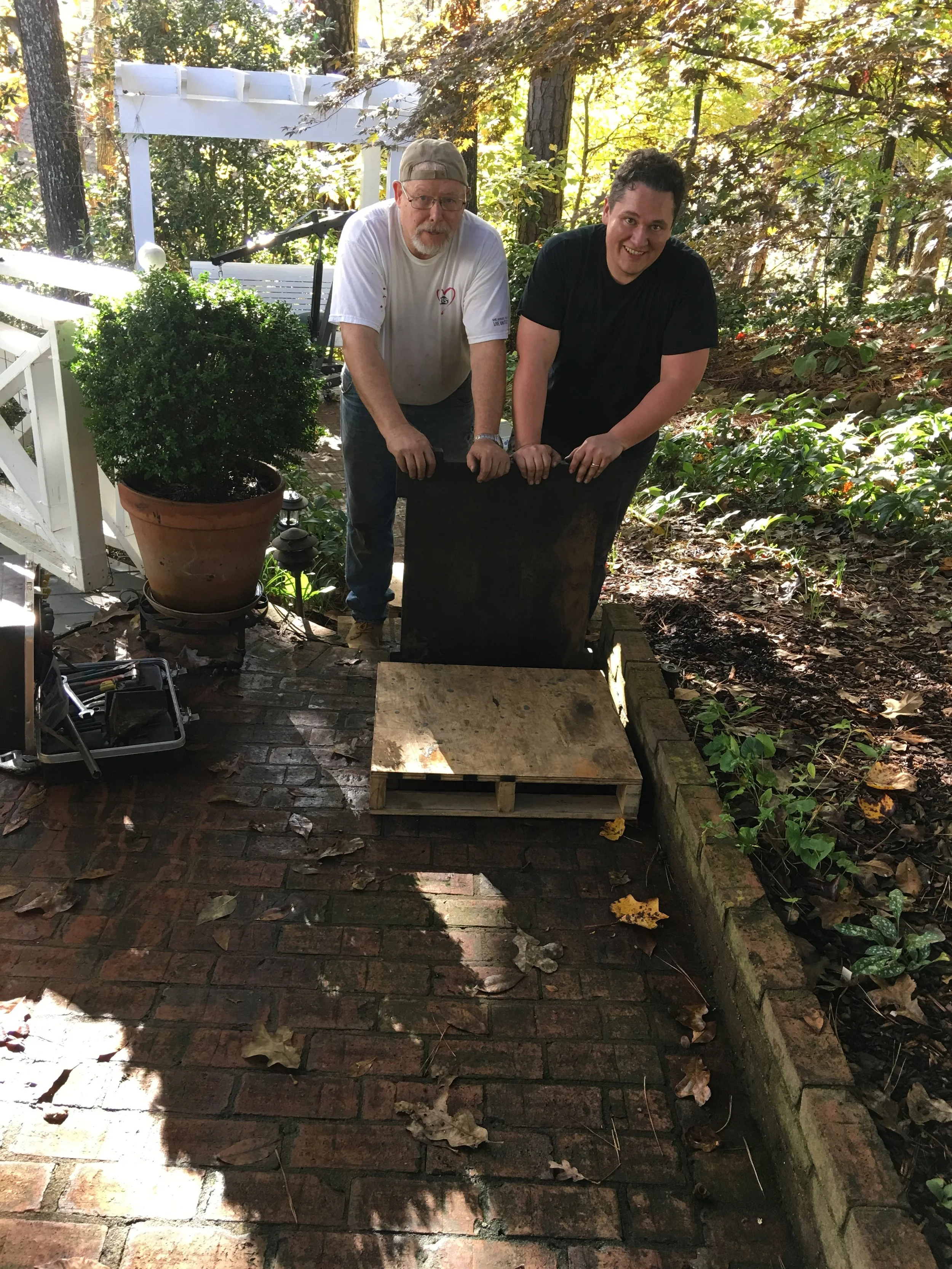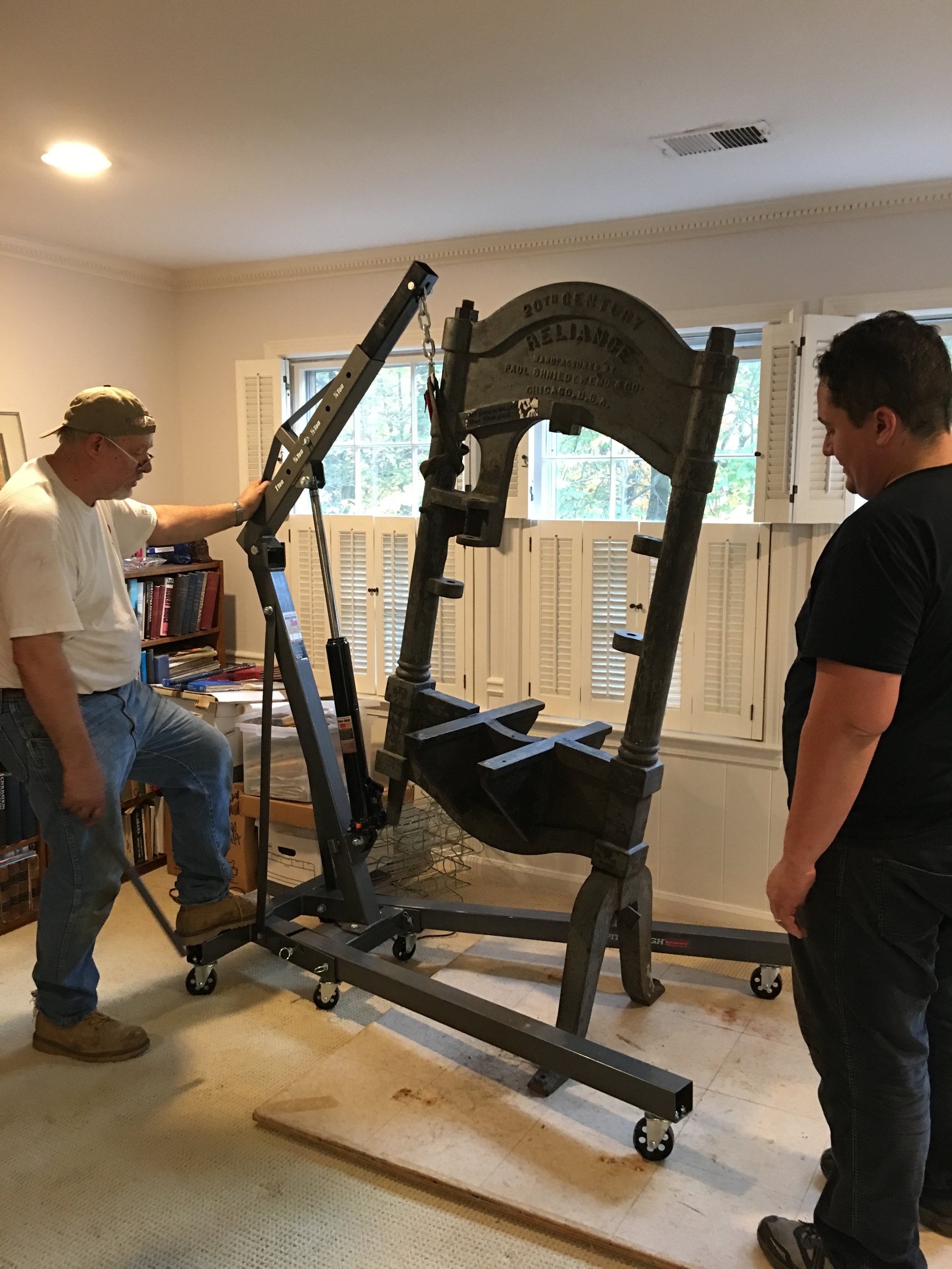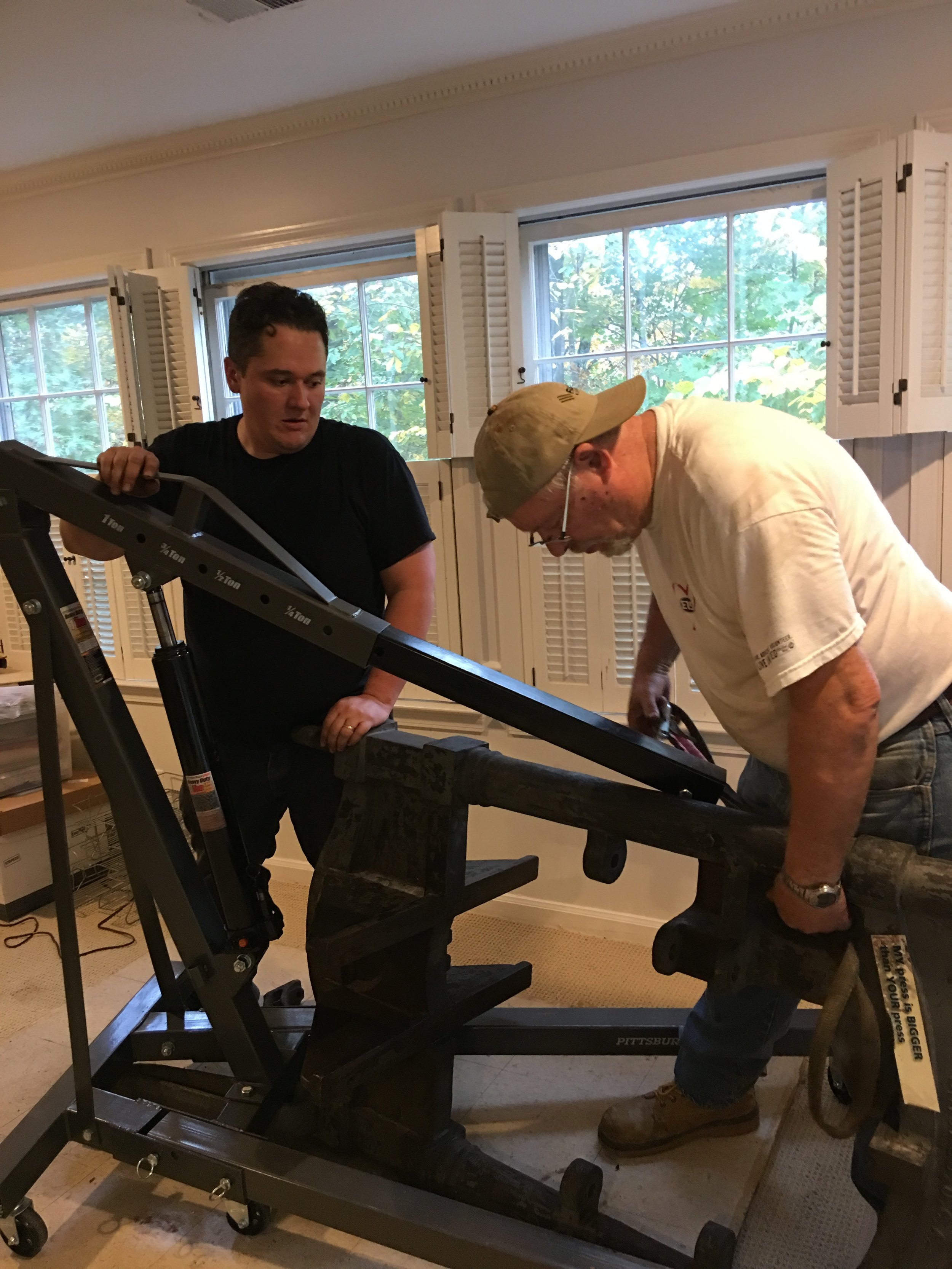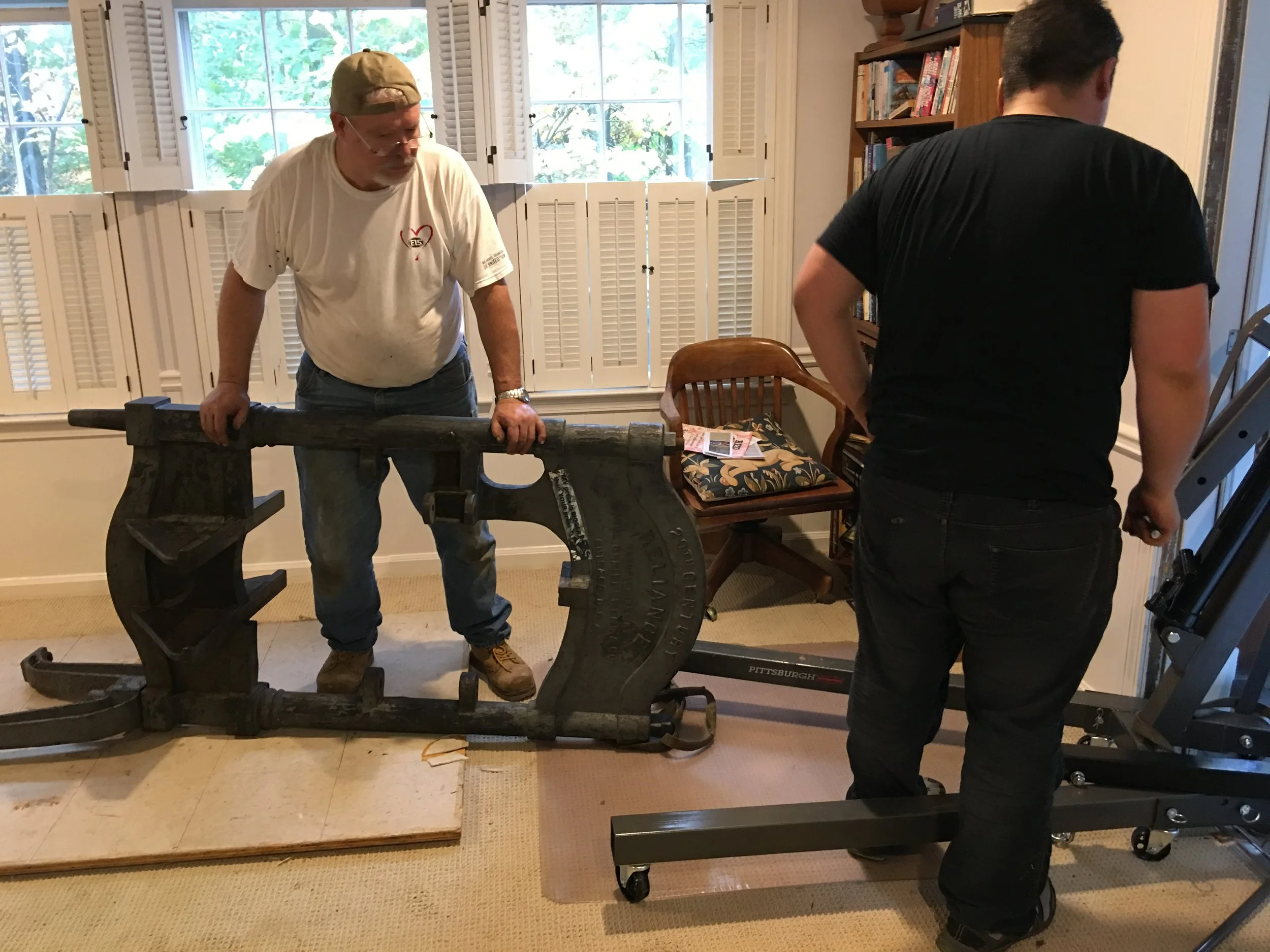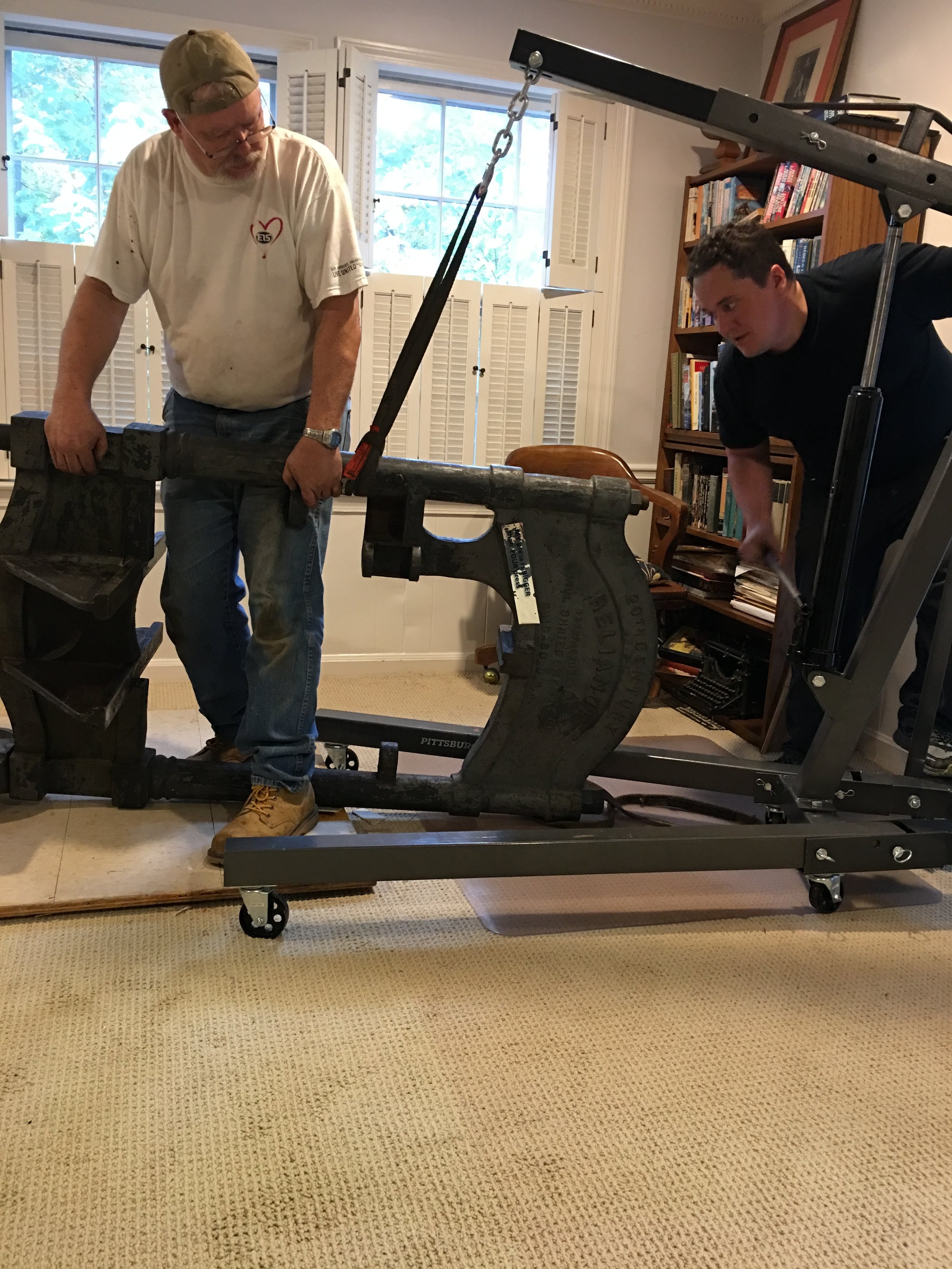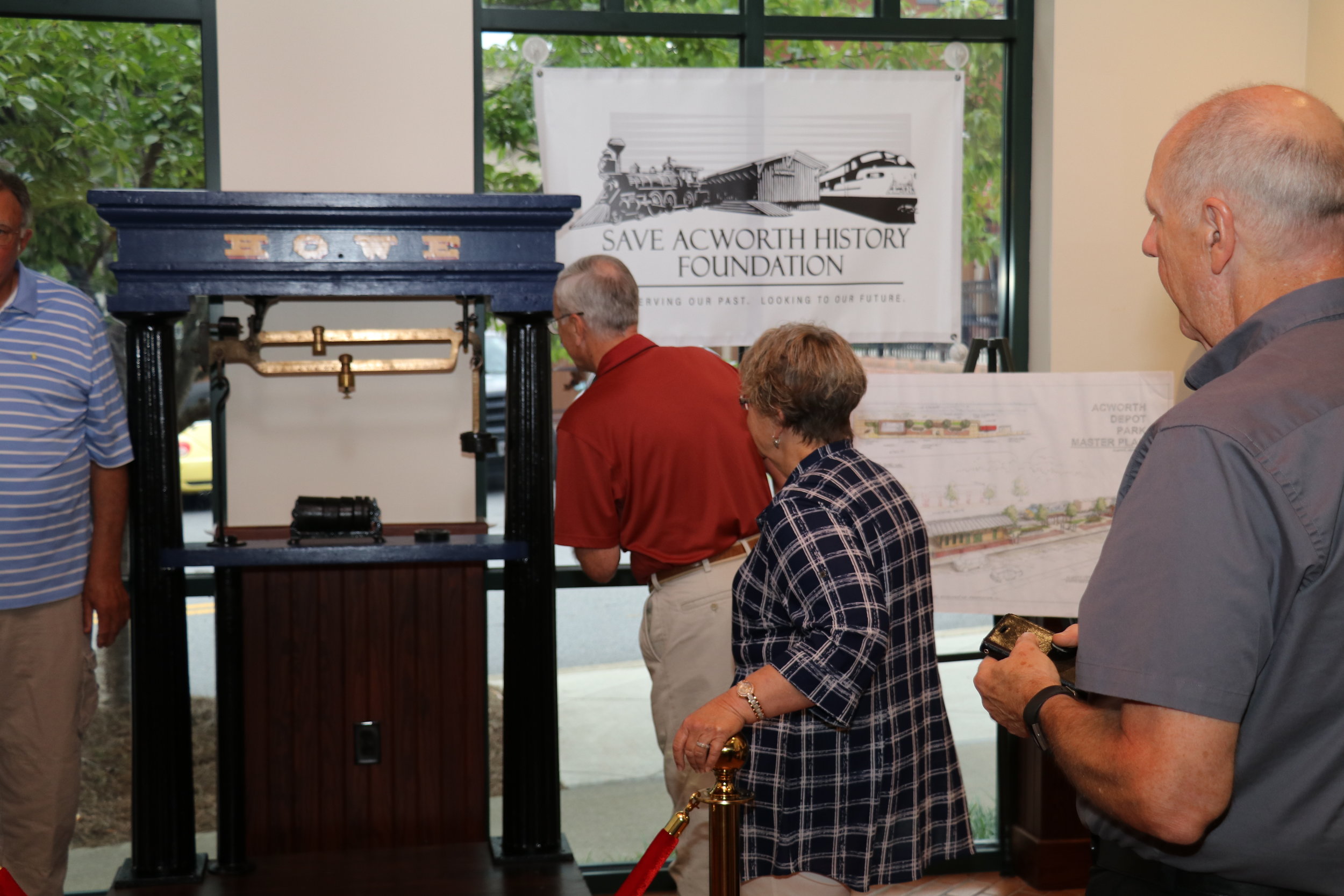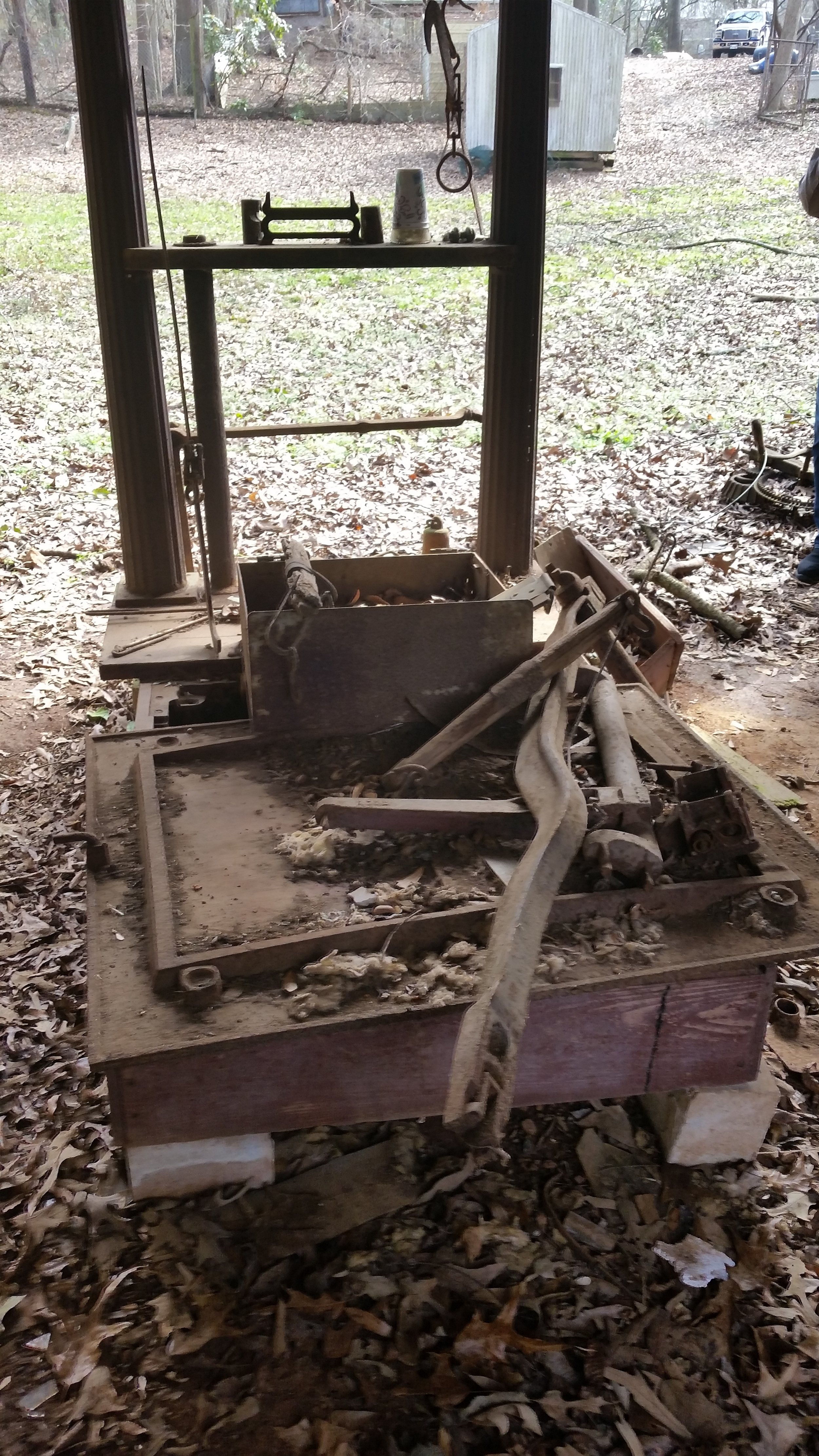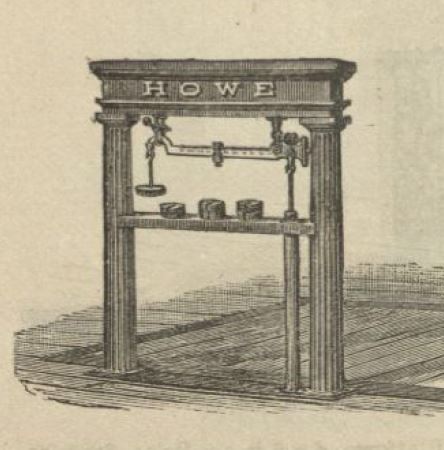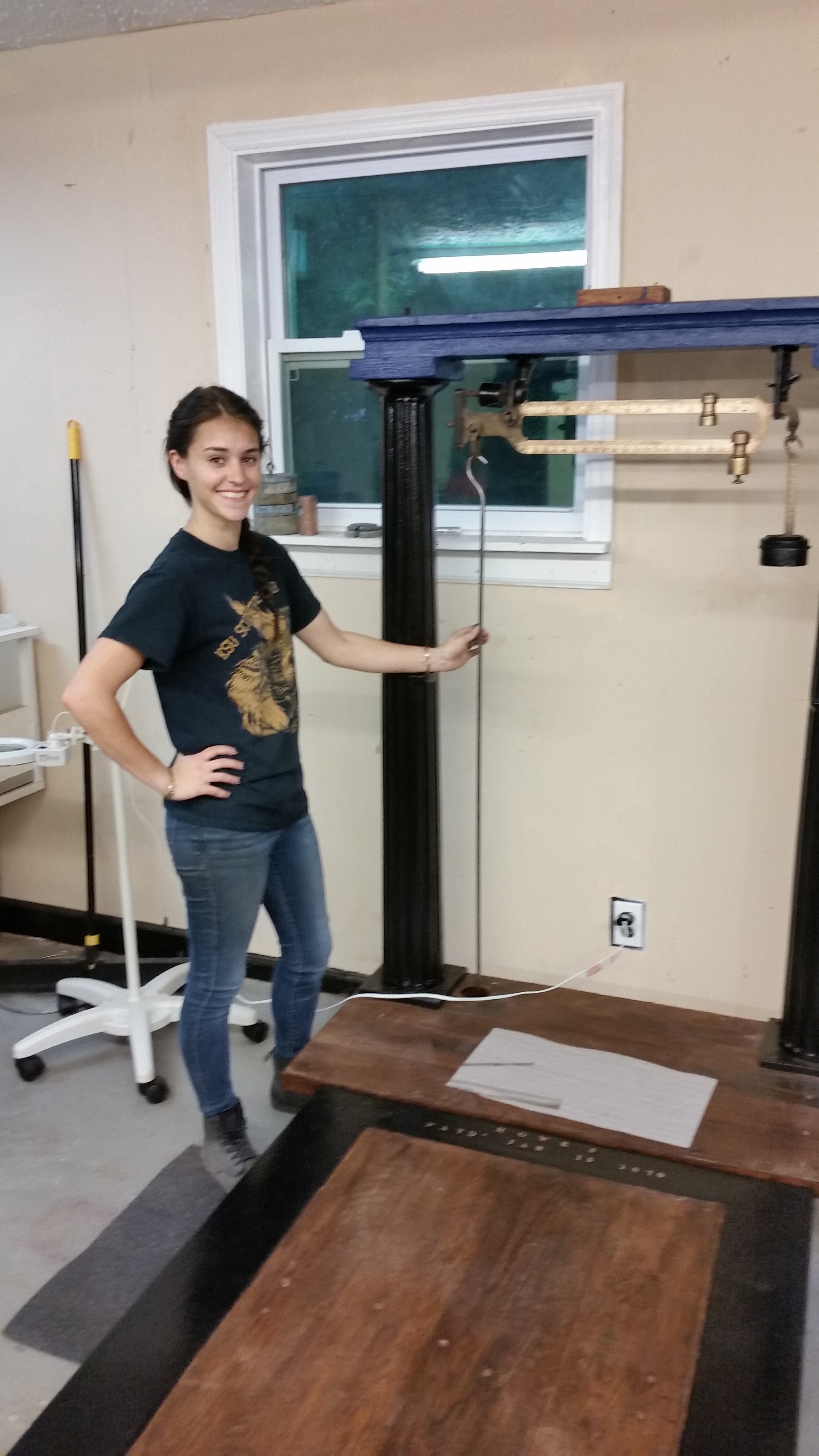For the last year and a half, an important part of our operations has been the restoration of letterpress equipment for artists and letterpress printers in our area. It’s nice to know that the word about our service to the printmaking community is starting to get around!
Hi Clemens…
Your information is correct, it was delivered this morning to my shop and after some tinkering and sanding, it’s perforating like 1888 was yesterday.
I’m grateful for the careful way you packaged everything, even supplying me with those bolts for the deck.
We sat around at lunch dreaming up perforation projects…like a love card perforate’d down the middle to use in case of break-up.The thing that just blows me away is how well all those pins are cutting. I assumed I’d have to pull them out and try to repair or sharpen them.
Also nice is how the little chads drop neatly down like a shower of termite droppings. I had expected them to have clogged up by now.
I noticed a little support underneath for a tray to catch them, and made a wood piece to fit. I saw your blog entry about the press going to our shop, and showed it around…we all were surprised at what a nice description you gave of our work out here….thanks!
So, an entirely successful move…and a delighted crew of printers eager to perforate something, anything!
best to you,
Eric Johnson, North Bay Letterpress Arts
Sebastopol, California
Printmaker Jami Taback demonstrating the Rosback Perforator in Sebastopol California.
